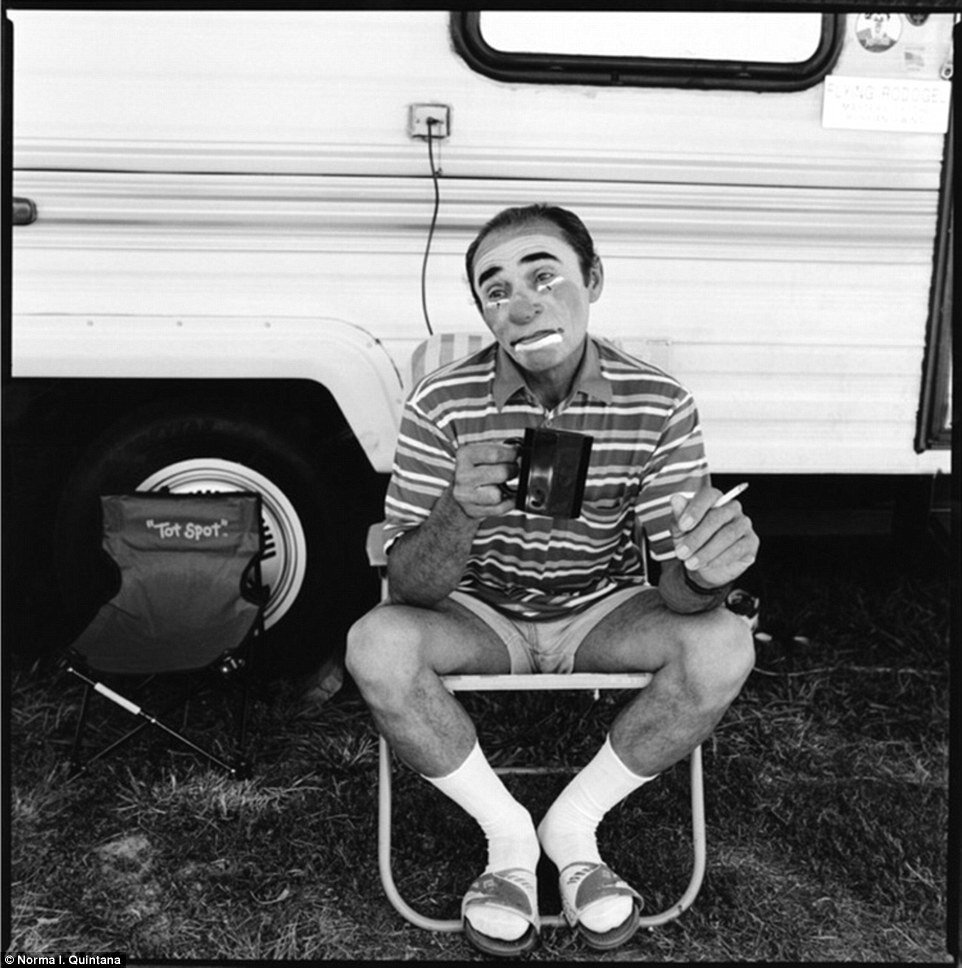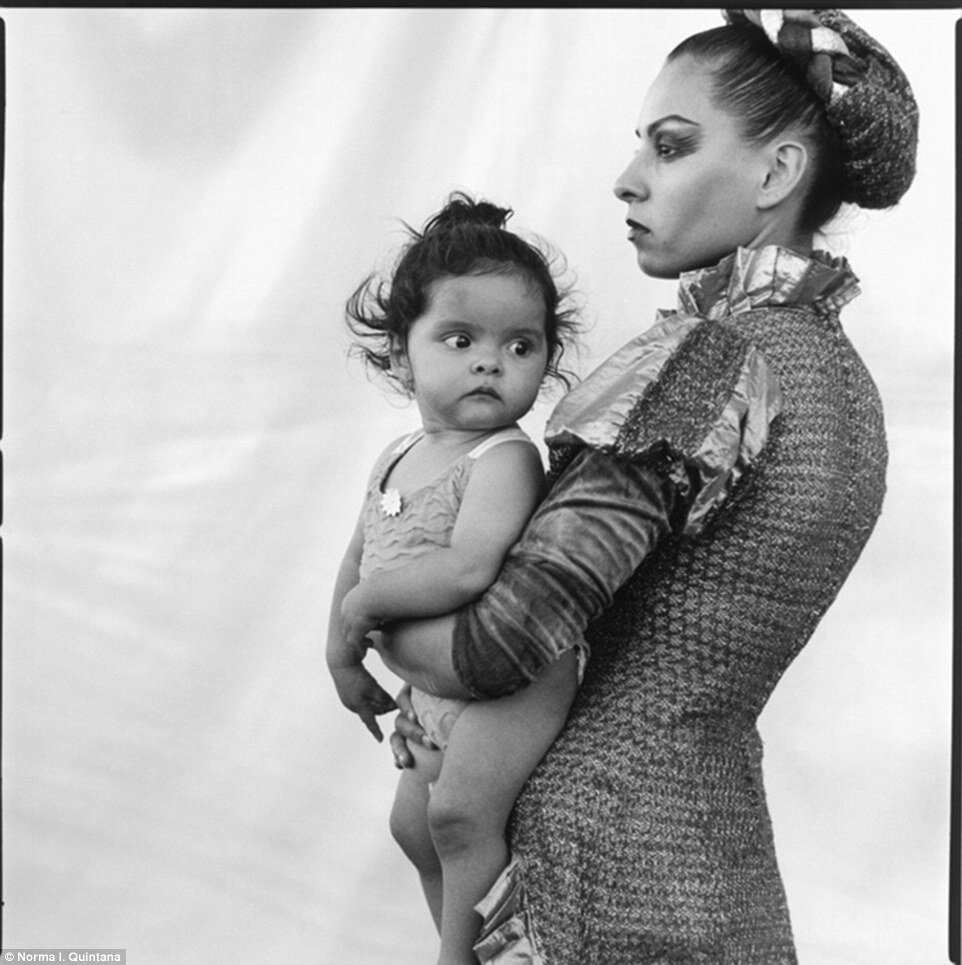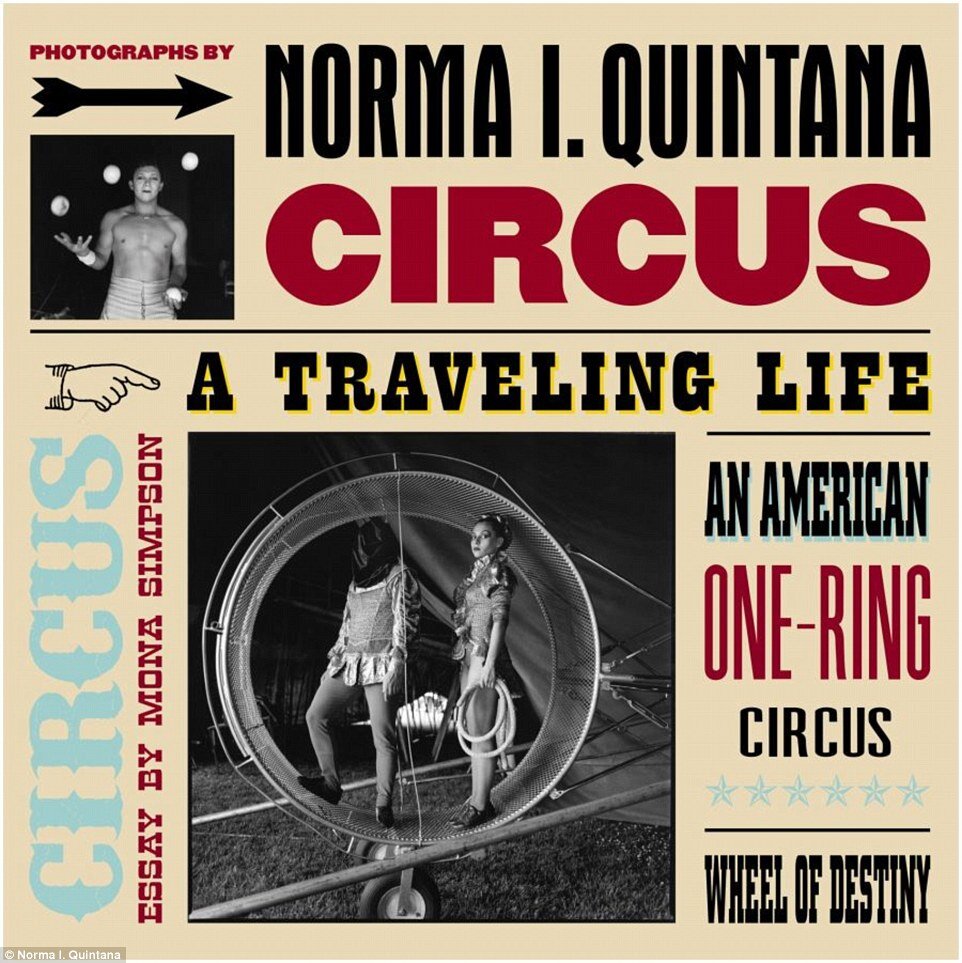WHEN THE CIRCUS CAME TO TOWN: AMAZING SCENES LOOK INSIDE A CARNIVAL GROUP AFTER A PHOTOGRAPHER SPENT 10 YEARS TRAVELING WITH THEM.
BY JOEL CHRISTIE 12/28/2014 Original articleThe Circus Chimera was closed down in 2007.
Its founder and operator, Jim Judkins, could no longer establish work visas for his many international performers - mostly from China, South Africa and Russia - following legislative changes, and was forced to stop the tour he had done for almost 10 years.
However the circus will forever live on thanks to photographer Norma I. Quintana.
The one-ring show started in 1998, and the following year visited Napa, California, where Quintana lived at the time.
She quickly became obsessed, wanting to know more about the people involved, and, with Judkins blessing, following the circus every summer from that year right up until the end.
Under the big top: The Circus Chimera toured America from 1998 and 2007, and California photographer Norma I. Quintana traveled with them every summer
Inside look: Quintana was given unprecedented access to the one-ring show
Behind-the-scenes: Quintana said she wanted to capture a more human side to the circus people
Family act: Some of the families involved started their children in the circus young
As her knowledge of the circus life grew, Quintana realized Chimera was different.
While other shows were strict about hiding their performers until it was time for them to be in the big top, Chimera was open.
'It felt like home in the back,' she told CNN.
'They were with their children, having cookouts, repairing costumes.
'This experience was very different from the others.'
Over the years performers would come and go, but the circus remained the same despite its changes in acts.
Each summer Quintana would shoot behind-the-scenes in black-and-white using only natural light.
As a mother herself, she was drawn to the parents in the show and how they managed their children.
'They had the ability to strap their kids in the stroller, do these death-defying acts, then put on their shoes and return to the trailer,' Quintana said.
Afternoon nap: Quintana has published her images into a book called Circus: A Traveling Life
Child star: As a mother herself, Quintana was particularly interested in the parents and their kids
Multi-tasking:
Candid: Quintana's photo book contains almost 100 black-and-white portraits
Life and times: Quintana photographed the circus until the end of its run in 2007
Quintana said that, while the circus folk were fine with being photographed, it was initially difficult to get them to act the way she hoped because 'they immediately act', she told The Huffington Post in October.
'I wanted to provide more of a human side to it—a sense of family and tradition and culture and love of performance,' she said.
Quintana would usually go to the shows and then leave at night.
Sometimes she stayed with them if it was too late.
'I dreamt of having my own trailer, but usually I’d leave when the lights would go down,' she told The Huff Post.
'I did it even when my kids were little.
'My family thought I’d lost my mind.'











